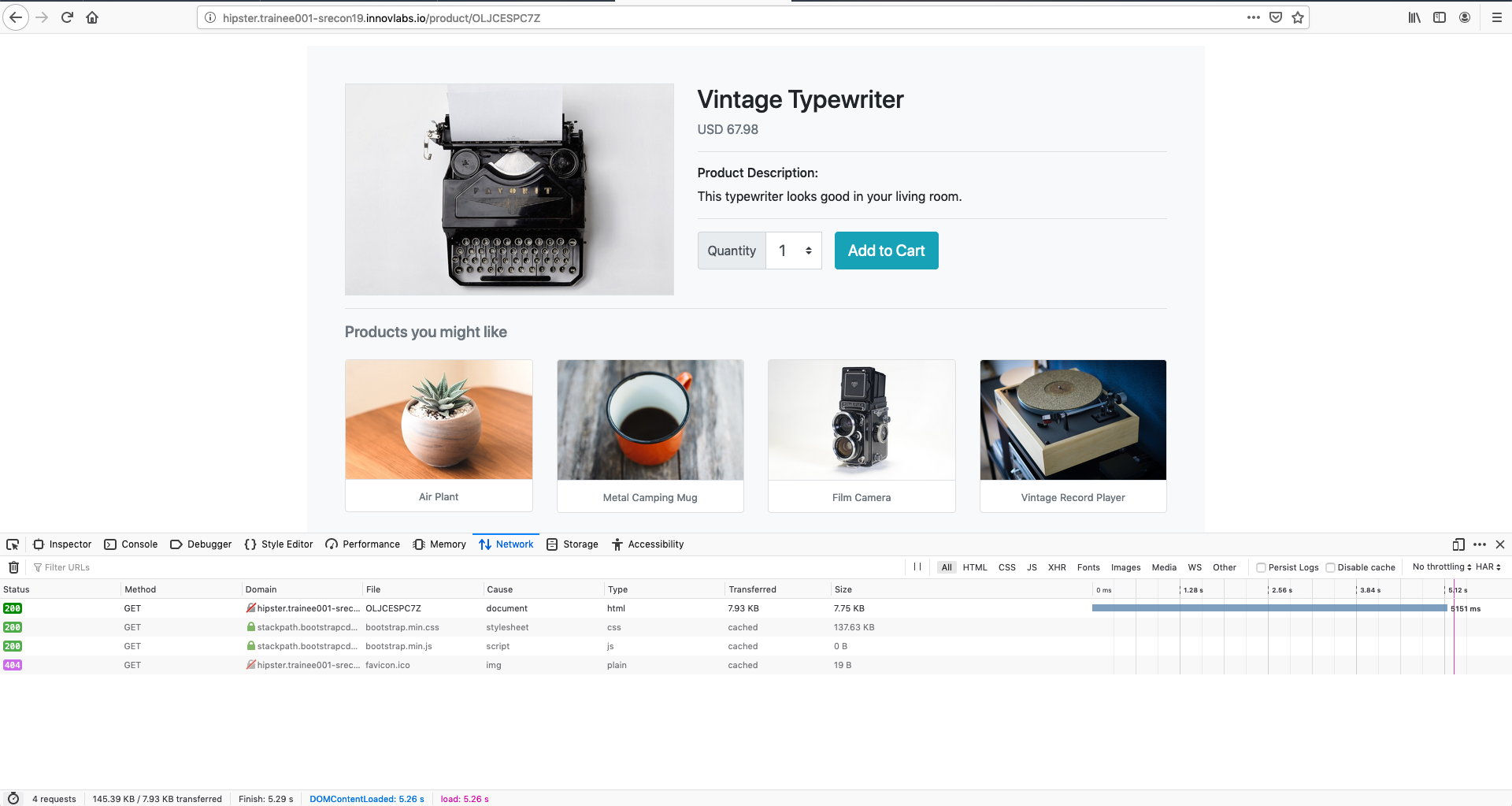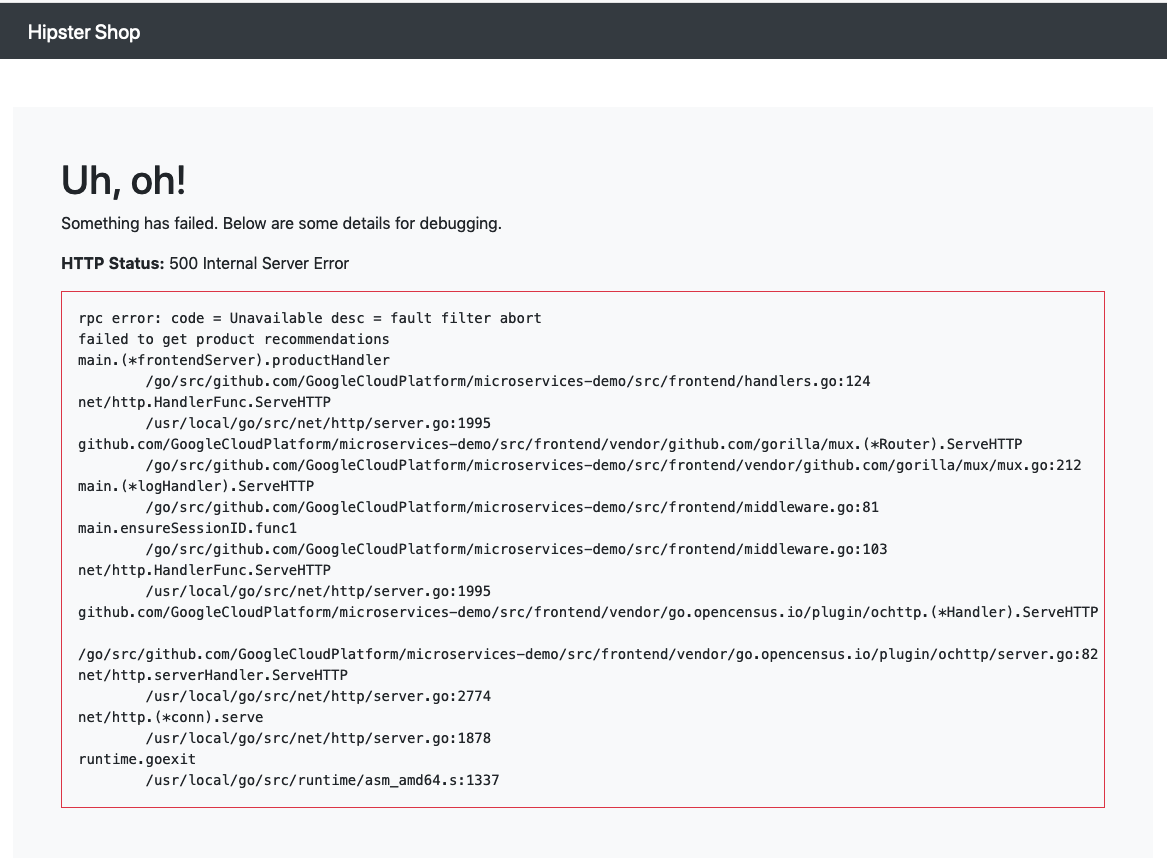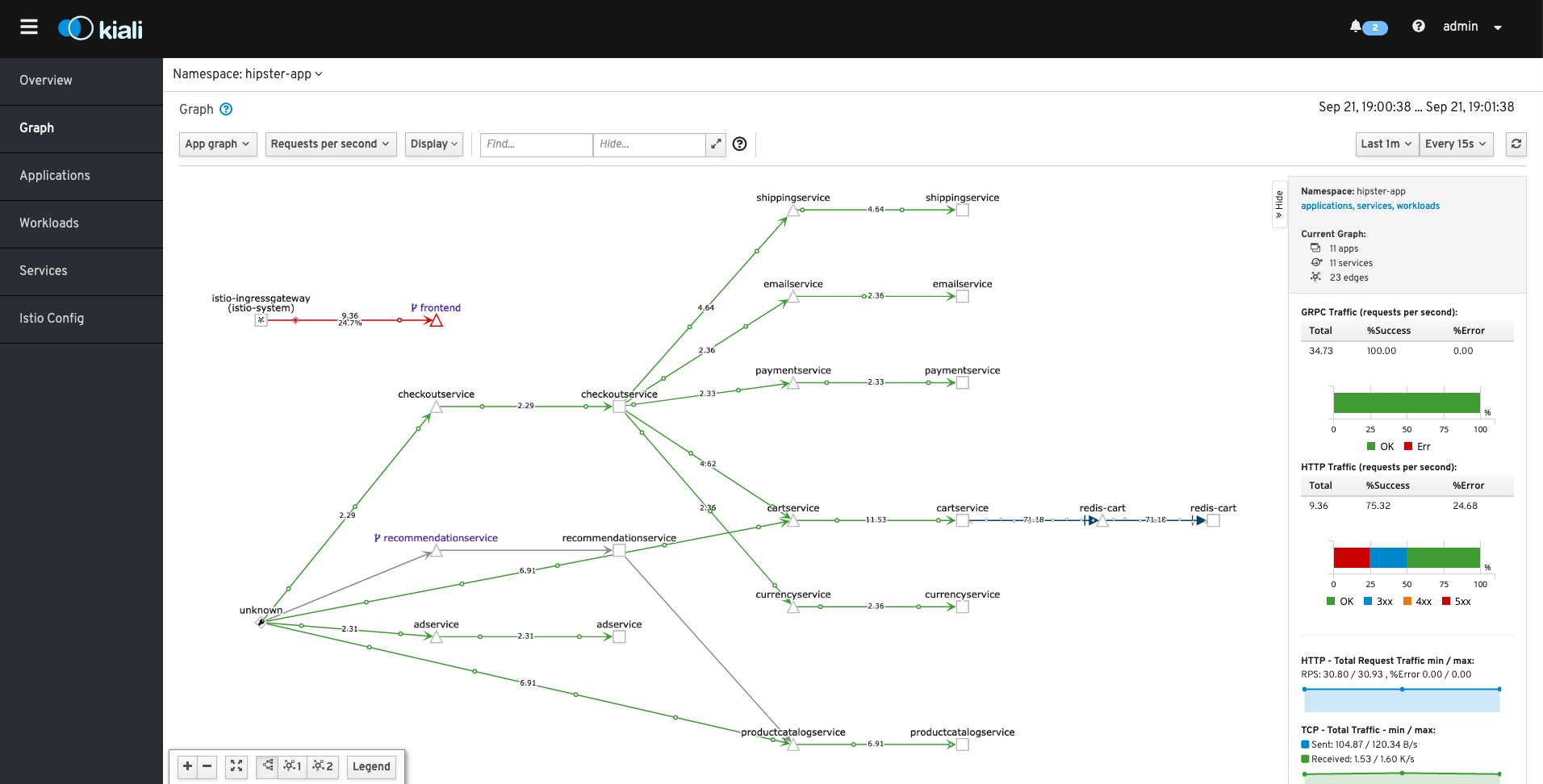Fault Injection
The pattern
Istio enables fault injection to test the resiliency of your application. With this feature, you can use application-layer fault injection instead of killing pods, delaying packets, or corrupting packets at the TCP layer. Istio defines two types of faults injection:
Delays: Delays are timing failures such us network latency or overloaded upstreams.
Aborts: Aborts are crash failures such as HTTP error codes or TCP connection failures.
How it works
The Fault injection is handled by the following Istio Object:
| Object | API | Version |
|---|---|---|
| VirtualService | networking.istio.io | v1alpha3 |
TODO: add diagram here.
Delay injection
Scenario: we want to test the availability of the whole application when there is a delay Recommendation Service. We define a VirtualService for the target service and we set fault of type delay with these two attributes of the http request.
The below rule will inject a fixed 5 seconds delay on all the requests going to Recommendation Service. You can modify percent and fixedDelay to change the probability and the amount of time for delay.
- fixedDelay:
percent: percent of the requests to apply the fault delay.
apiVersion: networking.istio.io/v1alpha3 kind: VirtualService metadata: name: recommendationservice-delay spec: hosts: - recommendationservice http: - route: - destination: host: recommendationservice fault: delay: percent: 100 fixedDelay: 5s
Open the hipster application on the browser and choose click to the one the products, product page details will trigger
Recommendation Service. Check the page loading time:Create a fault injection rule:
kubectl apply -f $WORKSHOP_HOME/istio-workshop-labs/recommendationservice-vs-delay.yamlRefresh the page or select any other product details page and you’ll see that loading the page takes roughly 5s.
Fault injection
This is a second example configure istio myservice to return 503 for each received request. the recommandation service will be out of the service and we would like to test the application when we have an outage service. Such configuration is useful when we want to isolate a service for analyse or because of high security leak impacting the service.
apiVersion: networking.istio.io/v1alpha3
kind: VirtualService
metadata:
name: myservice-503
spec:
hosts:
- myservice
http:
- route:
- destination:
host: myservice
fault:
abort:
percent: 100
httpStatus: 503
Delete the delay rule:
kubectl delete -f $WORKSHOP_HOME/istio-workshop-labs/recommendationservice-vs-delay.yamlCreate a fault injection rule:
kubectl apply -f $WORKSHOP_HOME/istio-workshop-labs/recommendationservice-vs-503.yamlGo to the Hispter application then click on a product from the list to get his details, we will get the below error on the screen:
We can see that the Product details page will not available when Recommendation service is returning 503.
As you can see, Istio can help you to harden your microservices architecture by providing handy tools to simulate different kind of application error cases.
Exercise
Change the abort percent to 20.
Open the application on the browser and check that you will get the error once after 4 product details requests:
Open Kiali and check the percent of 503 messages:


